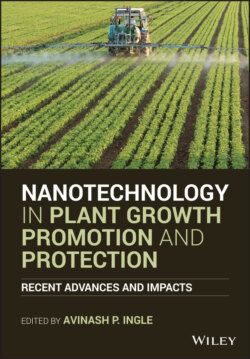Читать книгу Nanotechnology in Plant Growth Promotion and Protection - Группа авторов - Страница 57
3.3.2.4 Effects of Zn NPs on Plant Physiological and Biochemical Changes
ОглавлениеStudies performed in the past have observed beneficial physiological and biochemical changes for crop growth after Zn NPs application. Tarafdar et al. (2014) observed significant increase in activities of enzymes such as acid phosphatase (76.9%), alkaline phosphatase (61.7%), phytase (322.2%), and dehydrogenase (21%) in the rhizosphere of pearl millet due to foliar spray of Zn NPS (10 mg/L) after six weeks. García‐López et al. (2019) reported high phenolics and antioxidant content in habanero peppers with Zn NPs application at 2000 mg/L. According to Helaly et al. (2014), adding ZnO NPs supplements to MS media to culture banana plant promoted somatic embryogenesis, shooting, regeneration of plantlets, and also increased proline synthesis, the activity of superoxide dismutase, catalase, and peroxidase, thereby improving tolerance to biotic stress. ZnO NPs at 0.2–25 μM concentration positively affected the growth of tobacco plant (root and shoot length/dry weight), leaf surface area and its metabolites (auxin, phenolic compounds, flavonoids), leaf enzymatic activities including catalase, ascorbate peroxidase, superoxide dismutase, peroxidase, guaiacol peroxidase, polyphenol oxidase, and phenylalanine ammonia lyase (Tirani et al. 2019). Venkatachalam et al. (2017) also observed an increase in cotton growth (dry weight), pigment concentration (chlorophyll and carotenoids), and enzyme activities (superoxide dismutase and peroxidase) by more than 100% due to the application of phytomolecule coated ZnO NPs (5 nm).
